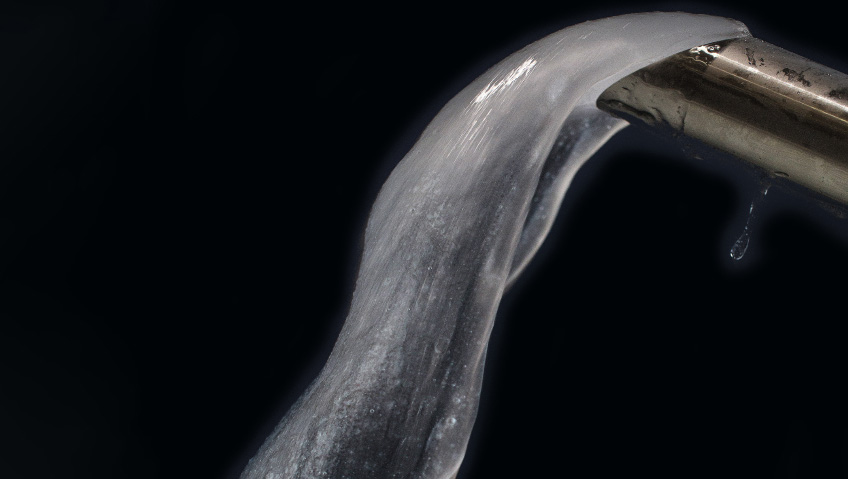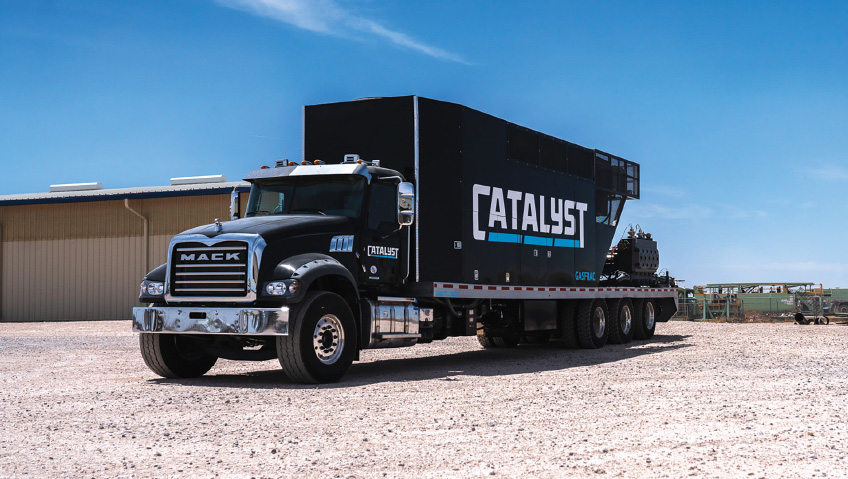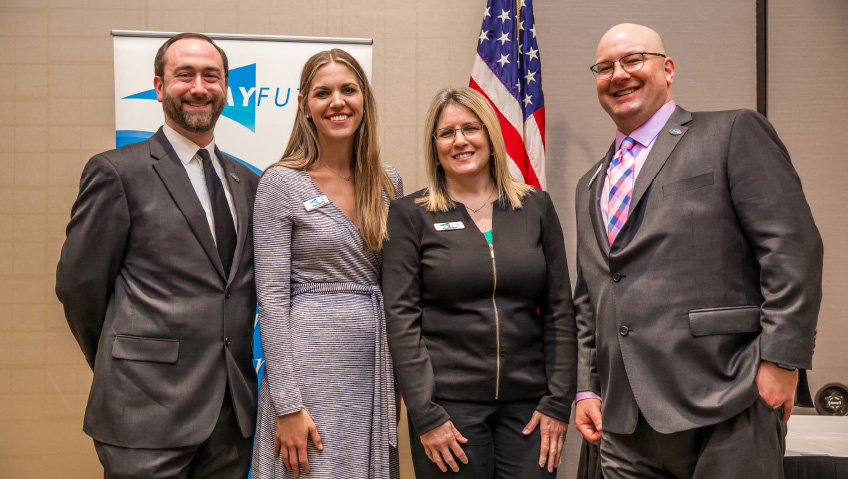Despite what you may think, make no mistake: Slurry ice is not all the same, and Deepchill® Technologies Inc., the main global provider of cutting-edge chilling and food preservation technologies to industry leaders, knows this better than anyone.
Formerly known as Sunwell, Deepchill® was established in Canada in 1978, inventing the slurry technology and still the market leader today, offering superior slurry ice production, storage, and distribution systems.
With unique solutions that have revolutionized a variety of industries—including food processing, transportation, and HVAC—the company has been introducing innovative technologies to the world for more than 45 years.
Used in a variety of applications, Deepchill® offers an all-natural and risk-free flexible cooling and preservation medium with a technology that delivers quick, uniform, and long-lasting ‘superchill’ to a variety of industries. Depending on requirements, it can be applied in a variety of forms, from a liquid paste to a dry crystal form.
The one and only
In short, there’s no other ice technology like Deepchill®. Composed of small pearl-like microcrystals produced in fresh or salt water and dispensed as a liquid slurry or crystal form to superchill and hold valued products at peak freshness, no other slurry ice technology has Deepchill®’s effectiveness, adaptability, or simplicity of use.
“The thing is this industry didn’t really exist before us,” says Kyle Morrison, Director of Sales. “We invented slurry ice in the 1970s and invented a system to do it. Before, people did essentially what they do now, which is adding ice to water, and then boom, there’s ice-water slurry—which is not the same thing.”
The company has not only helped the fishing industry deliver fresher fish over the years, it’s helped processors keep those fish fresh via several cutting-edge developments.
“We’re one of the only companies that can create snow without the ambient temperature being below zero degrees Celsius,” Morrison says. “We’ve done some really interesting projects over the years, whether it’s the snow in the penguin exhibit in San Diego, or helping fishermen quickly and effortlessly chill their fish after being caught, or processors keeping those fish cold during processing, or transporters keeping those fish cold as they’re sent to the end user,” he explains.
“There’s a whole cold chain, and I would prefer to think of this not just as any single part of the chain but the whole cold chain.”
Pushing boundaries
The company’s continued innovation and willingness to push the boundaries of technology by providing fast, uniform, and long-lasting cooling are just a few of the reasons for Deepchill®’s success.
“If I had to describe this company in just a few words, I would boil it down to the fact that we get food colder faster so it stays fresher longer,” says Morrison. “That’s it.”
Getting food colder faster involves superchilling, or bringing the temperature of food below zero degrees Celsius, but above the point where it actually freezes. Only pure water freezes at zero, and once you start adding salt, for instance, that freezing point goes lower, which is why sea water doesn’t freeze at zero degrees Celsius and why salt is put on the roads in the winter to melt ice.
“You can actually do the same thing with food,” Morrison says. “You can bring that temperature below zero but keep it above the point where it freezes. And this really extends product freshness, shelf life, and quality.”
Whether it’s milk which has been left in a lunch bag all day, broccoli, bass, or salmon—when food gets relatively warmer, it goes bad much faster. “We’re wasting something like 35 percent of every kilogram or every pound of fish that we take out of the oceans,” Morrison shares. “Half of it is wasted due to bad temperature control, so if that food had been kept fresh from the time of harvest to the time of processing, to the time of shipping, and to the time when the end user gets it, we would be wasting a heck of a lot less,” he says.
“When we see what’s happening to our oceans and the food supplies we have, respecting that cold chain and doing more with less is really what we need to do as a species moving forward.”
So how does the industry continue to push boundaries for better quality, longer shelf life, operational efficiencies, and even better market reach?
Morrison has a few ideas including, first and foremost, greater market reach. Mussels, he says, are generally all transported by truck because of their weight. But there is a delivery range with shellfish like mussels, oysters, and clams; if you can Deepchill® them and keep them very cold before and during transport, there is a significant increase in that zone that you can ship to, because now that customer who’s 10 days away is reachable by the transportation company at an economical cost.
A few degrees
“Quality and shelf life go hand in hand,” says Morrison. “A few degrees’ difference in temperature makes a massive difference. The difference between two degrees and negative one degree is the difference between eight days or 18 days, so what we give people is double the freshness and double the shelf life in relative terms,” he says.
“The biggest challenge we run into is the mindset of people,” Morrison says. “People don’t understand what slurry is and they don’t understand Deepchill®. They understand chilled water, a chiller, coil and pumping tons of water over the chiller. Or putting ice on the fish. Or there are the people who put fishing water in, and then ice, and there’s the ‘slurry.’ Sometimes something can look like a duck and quack like a duck, but it’s not a duck.”
While every piece of ice ever used in your life has formed on a surface—water freezing on something—what Deepchill® does is completely different. The company’s unique process forms crystals in suspension in water, so water goes through the heat exchanger and is agitated, with ice not allowed to warm on the heat exchanger on the surface. As the water goes through, it’s chilled down below the point where it freezes, but can’t freeze on the surface of the heat exchanger.
This results in tiny ice crystals—0.1 to 0.2 millimetres in diameter—forming in the water. Under a microscope, they resemble crystals of snow.
It’s all in the particle
“The size and shape of the particle we produce gives our slurry different thermodynamic properties,” Morrison says. “It’s these properties that give us a high coefficient of performance, which is just a funny way of saying that’s how we’re able to suck the heat out of food really fast, because of the uniform and small size and shape of our particle.”
Morrison compares the process to people who are happy watching black and white TVs versus those with a new flat-screen TV connected to the internet. “The latter solution gives you so much more functionality; it’s so much newer and a much better mousetrap,” he says.
“It’s the same thing we’re dealing with here. We either get people who use chilled water and think it’s a good solution, or people who use ice because their great-great grandfather used ice and that’s what they’ve always done. That’s the biggest competitor to us right now: what they did previously is somewhat okay, so why should they change?”
Changing that mindset is the obstacle Deepchill® faces, even within its own industry. At a recent aquaculture show in New Orleans, Morrison was the only vendor talking about what happens when fish are harvested, how to maximize yields, and how to maximize return in the aquaculture operation.
“They were talking about how to keep the fish alive and how to filter the water and get out all the contaminants and make this a hospitable place for fish,” he says. “We don’t think about it, we just take it for granted. And I’ve met companies who don’t use any cooling whatsoever until after the fish are filleted and it goes into their freezer. And they wonder why they run into these quality issues, whether gaping in the meat or why their quality is not as good as this other person’s. And it all comes down to temperature control.”
Real slurry, real solution
The bulk of Deepchill®’s competition makes the fake slurry ice that Morrison refers to, using conventional technology to make ice crystals before grinding those ice crystals into a pulp and adding that to salt water for a slurry. “So what sets us apart is really 45 years of intellectual property, and understanding how slurry ice flows in different concentrations.”
Between 10 and 40 percent concentration, the company’s slurry ice looks and feels a lot like ‘thick’ water, but between 40 and 70 percent, the consistency becomes something like soft ice cream, which is a consistency most of Deepchill®’s competitors can’t get close to. “We, however, understand how slippery ice works; we understand how it interacts in its environment; we understand the ‘non-Newtonian’ nature of the fluid,” Morrison says.
Deepchill® is also able to do interesting things that other companies can’t do, he adds, like deliver a higher fraction slurry over a long distance, or use its technology in the baking industry or the ice pigging industry. “There are a lot of industries that are available to us that are not available to the competition,” Morrison says.
“At the end of the day, we really do help people get things cold faster, to keep them fresher longer.”






